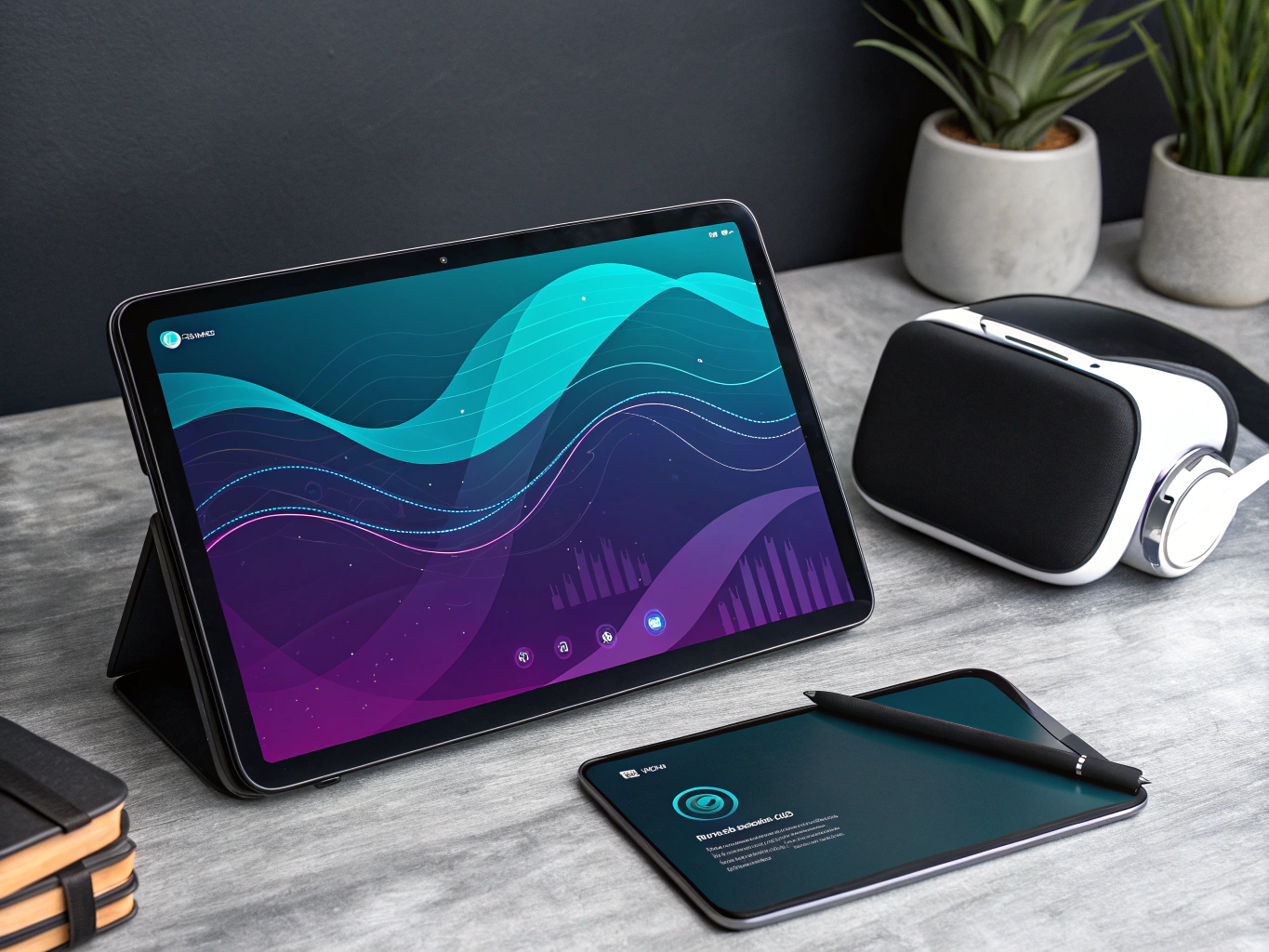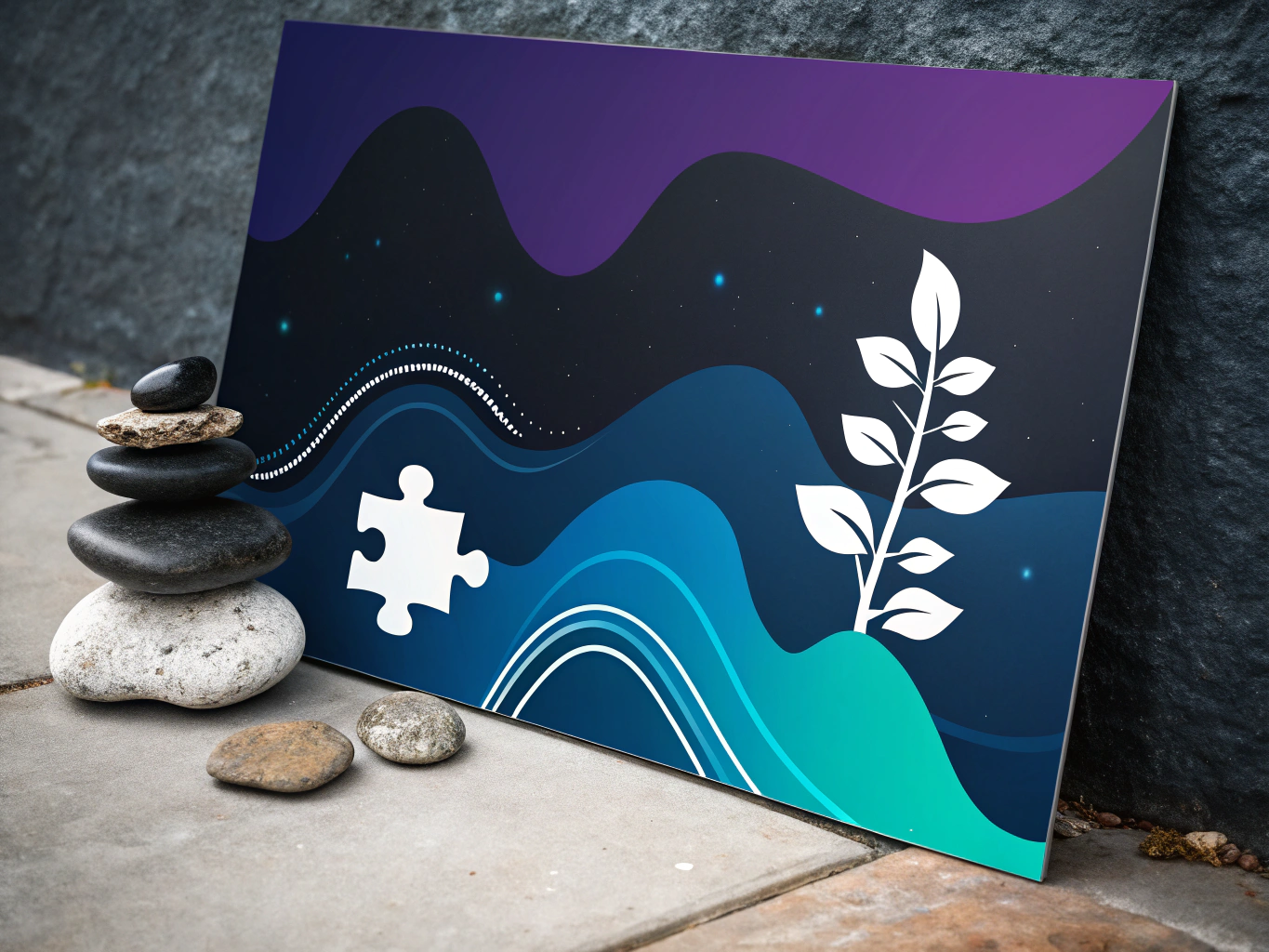The Psychology Behind Interactive Content Marketing
Remember when marketing was just… broadcasting? Brands would shout their messages into the void, hoping something would stick. Like throwing spaghetti at a wall, except the spaghetti cost millions in ad spend.

But here’s the thing about human psychology – we’re wired for interaction. We don’t want to be talked at; we want to be talked with. This is where interactive content marketing comes in, transforming passive consumers into active participants in your brand’s story.
Think of interactive content as the difference between watching someone play a video game and actually grabbing the controller yourself. Sure, you might learn something from watching, but you’ll remember the experience far more vividly when you’re the one making the decisions.
Why Interactive Content Marketing Examples Matter Now

The data tells an interesting story: interactive content generates 2x more conversions than static content. But that’s not even the most fascinating part. What’s really mind-bending is how it’s rewiring our expectations of digital experiences.
I’ve seen this firsthand with ProductScope AI users – brands that implement interactive elements in their product launches see engagement rates spike by 40-60%. It’s not just about flashy features; it’s about creating meaningful connections that stick.
The Evolution of Interactive Marketing
We’ve come a long way from simple web forms and basic surveys. Today’s interactive content landscape is like a digital playground where brands and consumers can actually have fun together. Remember those clunky “Click here!” buttons? They’ve evolved into immersive experiences that feel more like conversations than commands.
The rise of AI and machine learning has turbocharged this evolution. Suddenly, we’re not just creating interactive experiences – we’re creating intelligent ones that adapt and respond to user behavior in real-time. It’s like having a million personalized focus groups running simultaneously, except way more efficient and actually enjoyable for participants.
This transformation is beautifully captured in this guide which illustrates how brands are using interactive content to stand out.
Breaking Down Interactive Content Types
Quizzes and Assessments: The Gateway Drug of Interactive Content
Let’s be real – who hasn’t fallen down the BuzzFeed quiz rabbit hole at least once? But beyond finding out which type of potato you are (I’m apparently a russet), quizzes and assessments have become powerful marketing tools. They tap into our natural curiosity and desire for self-discovery.
For ecommerce brands, product recommendation quizzes are pure gold. They combine the addictive nature of personality tests with actual useful outcomes. I’ve seen skincare brands triple their conversion rates by simply helping customers find their perfect routine through interactive assessments.
Calculators and Interactive Tools: The Problem Solvers
If quizzes are the gateway drug, calculators are the heavy-duty stuff. They solve real problems and provide tangible value. ROI calculators, pricing configurators, savings estimators – these tools turn complex decisions into interactive experiences that actually help people make choices.
A furniture brand I worked with implemented a room planner tool that lets customers visualize different layouts. Not only did it reduce returns by 23%, but it also increased average order value because people felt more confident in their purchases.
Interactive Infographics and Data Visualization
Static infographics are so 2015. Today’s data visualization tools let users explore information on their own terms. It’s like giving them a flashlight in a dark room full of interesting stuff – they get to choose what to illuminate.
The key is making complex data accessible without dumbing it down. I love seeing brands use interactive charts where users can hover over data points to reveal stories, or timelines that unfold as you scroll. It transforms information consumption from a passive to an active experience.
The Science of Engagement
Here’s what’s fascinating about interactive content – it hijacks our brain’s reward systems in the best possible way. Every click, every interaction, every choice triggers a tiny dopamine hit. It’s the same mechanism that makes video games addictive, except we’re using it to create value and build relationships.
The numbers back this up: interactive content sees an average of 52.6% more engagement than static content. But it’s not just about keeping people on your page longer – it’s about creating memories. When someone actively participates in an experience, they’re more likely to remember it, share it, and come back for more.
Building Emotional Connections Through Interaction
Let’s talk about something that often gets overlooked in marketing discussions – emotional resonance. Interactive content creates moments of discovery, achievement, and sometimes even delight. These emotional touchpoints are what transform casual browsers into brand advocates.
I recently saw a pet food brand create an interactive “pet personality” quiz that didn’t just recommend products – it created shareable “pet profiles” that captured the unique quirks of each furry friend. The result? A 78% share rate and a community of pet parents who felt truly seen and understood.
The Interactive Content Revolution: Beyond Static Marketing

Let’s be honest – most marketing content today feels like shouting into the void. Brands push out endless blog posts, social updates, and emails… yet engagement keeps dropping. It’s like trying to have a conversation with someone who’s scrolling through their phone – technically present, but not really there.
This is where interactive content marketing comes in, and it’s not just another buzzword. Think of it as the difference between watching a movie and playing a video game. Both can tell great stories, but only one lets you be part of the narrative.
The Psychology Behind Interactive Content’s Success
Our brains are wired for interaction – it’s how we learn, connect, and make decisions. When we actively participate in something, we retain up to 60% more information compared to passive consumption. This isn’t just neuroscience talking; it’s why your kid remembers every Minecraft recipe but struggles with multiplication tables.
7 Interactive Content Examples That Actually Work
1. Product Configurators: The Digital Playground
Remember customizing your first Nike shoes online? That’s interactive content at its finest. Product configurators let customers play designer, creating emotional investment before purchase. We’ve seen conversion rates jump 40% when brands implement these tools correctly.
2. Interactive Quizzes: More Than Just BuzzFeed Fun
The “What Kind of Coffee Matches Your Personality?” quiz isn’t just entertaining – it’s a data goldmine. Smart brands use quizzes to gather zero-party data while delivering personalized product recommendations. One of our clients saw email signup rates triple after implementing a skincare routine quiz.
3. Augmented Reality Try-Ons: The Virtual Fitting Room
AR has moved beyond the Pokemon GO phase. Brands like Warby Parker and Sephora use AR to let customers virtually try products before buying. It’s not just cool tech – it’s solving real problems. Return rates typically drop 25% when customers use AR preview features.
4. Interactive Calculators: Making Complex Simple
ROI calculators, mortgage estimators, savings planners – these tools transform abstract numbers into tangible value. A B2B client of ours replaced their whitepaper with an interactive ROI calculator and saw lead quality improve by 45%. Why? Because it helped prospects visualize specific value rather than wade through generic promises.
5. Choose-Your-Own-Adventure Content
Remember those books where you’d choose what happened next? That concept works brilliantly in content marketing. We’re seeing brands create interactive case studies where readers select different business challenges and see relevant solutions. It’s like Netflix’s Bandersnatch, but for business decisions.
6. Interactive Infographics: Data Storytelling 2.0
Static infographics are so 2015. Interactive data visualizations let users explore information at their own pace, discovering insights relevant to their specific interests. The New York Times does this brilliantly with their data journalism – and yes, it works for brands too.
7. Gamified Learning Experiences
Duolingo didn’t revolutionize language learning by being another textbook – they turned it into a game. Brands are applying this same principle to product education, onboarding, and customer training. One of our ecommerce clients turned their product manual into a “mission-based” interactive guide and saw completion rates jump from 12% to 68%.
The Technical Reality Check
Here’s the thing about interactive content – it’s not just about throwing some JavaScript on a page and calling it a day. The best interactive experiences are those that feel effortless to the user while solving real problems.
When we help brands implement interactive content at ProductScope AI, we focus on three key technical considerations:
- Mobile-first design (because 70% of interactive content is consumed on mobile)
- Performance optimization (interactive doesn’t mean slow)
- Data collection architecture (making sure we’re gathering insights that actually matter)
For a deeper dive into creating engaging interactive content, explore this comprehensive guide.
The ROI Question
Let’s talk numbers, because that’s what really matters. Interactive content typically costs 2-3x more to produce than static content. But here’s the kicker – it also generates 4-5x more conversions when done right. The math isn’t complicated.
We’re seeing average engagement times of 8-10 minutes with interactive content, compared to the typical 15 seconds for static blog posts. That’s not just better engagement – it’s better opportunity for brand connection and conversion.
Common Pitfalls to Avoid
Before you rush off to turn everything interactive, let’s address some common mistakes:
- Making interaction mandatory when it should be optional
- Overcomplicating the user experience
- Focusing on “cool factor” over actual utility
- Not having a clear data strategy behind the interactions
Implementation Strategy: Starting Small

You don’t need to rebuild your entire content strategy overnight. Start with one high-impact piece of content that could benefit from interactivity. Maybe it’s that pricing page that’s not converting, or that product guide that nobody reads.
Test, measure, learn, iterate. That’s the beauty of interactive content – you get immediate feedback on what works and what doesn’t. Your users will tell you through their actions, not just their words.
Creating Immersive Interactive Experiences That Convert
Let’s be real – most interactive content out there feels like it was designed by committee. You know the type: those clunky “interactive” PDFs that are basically PowerPoint slides with a few clickable buttons slapped on. But here’s the thing: true interactive content isn’t about fancy bells and whistles. It’s about creating experiences that feel natural, intuitive, and genuinely helpful.
AR and VR: Beyond the Buzzwords
Everyone’s talking about AR and VR in interactive content marketing, but few are doing it right. The key isn’t to create something that feels like a tech demo – it’s about solving real problems. Take IKEA’s AR app. It’s not just cool tech; it solves the very real problem of “will this couch actually fit in my living room?” That’s the difference between gimmicky interactive content and something that actually drives conversions.
Interactive Content Marketing Examples That Actually Work
The best interactive content marketing examples share one thing in common: they make complex decisions simpler. Think about Warby Parker’s virtual try-on feature. It’s not just an AR filter – it’s removing the biggest barrier to buying glasses online. Or consider how Stitch Fix uses interactive quizzes not just to gather data, but to make customers feel understood and valued.
The Psychology Behind Interactive Content
Here’s something fascinating: our brains process interactive experiences differently than passive content. When we actively engage with content – clicking, dragging, making choices – we’re more likely to remember it and, more importantly, act on it. It’s like the difference between watching someone cook and actually getting your hands dirty in the kitchen.
Building Your Interactive Content Strategy
 examples of interactive content?”/>
examples of interactive content?”/>The secret to successful interactive content marketing isn’t just picking the right tools – it’s understanding your audience’s journey. Where are they getting stuck? What decisions are they struggling with? Those pain points are your opportunities for interactive content that converts.
Measuring Success Beyond Click-Through Rates
Traditional metrics don’t tell the whole story with interactive content. Sure, track your completion rates and conversion metrics, but also look at time spent engaging, return visits, and the quality of data you’re collecting. Sometimes the most valuable outcome isn’t an immediate sale – it’s the rich customer data that helps you serve them better in the future.
The Future of Interactive Content
We’re entering an era where AI and interactive content are converging in fascinating ways. Imagine product configurators that learn from collective user behavior, or interactive guides that adapt their complexity based on user expertise. The possibilities are endless, but the fundamentals remain the same: solve real problems, create genuine value, and make complex decisions easier.
Implementation Tips for Success
- Start small and iterate based on user feedback
- Focus on mobile-first experiences
- Ensure loading times don’t kill engagement
- Build in analytics from day one
- Test across different devices and browsers
For more interactive content strategies, explore these successful examples that illustrate the power of engagement.
Conclusion: Making Interactive Content Work for Your Brand
Interactive content marketing isn’t just about jumping on the latest tech bandwagon. It’s about creating experiences that make your customers’ lives easier while driving real business results. The brands that get this right aren’t necessarily the ones with the biggest budgets – they’re the ones who truly understand their customers’ needs and pain points.
Remember: the best interactive content feels less like a marketing tool and more like a helpful service. Whether it’s a simple quiz or a complex AR experience, if it solves a real problem for your audience, you’re on the right track.
And here’s the thing about interactive content that most marketers miss: it’s not just about the immediate conversion. It’s about building a relationship with your audience that makes them want to come back for more. In a world where attention is increasingly fragmented, that kind of engagement is pure gold.
The future of interactive content marketing isn’t about more bells and whistles – it’s about better understanding and serving your audience. Focus on that, and the conversions will follow.
👉👉 Create Photos, Videos & Optimized Content in minutes 👈👈
Related Articles:
- Interactive Content Examples: 7 Formats Boosting ROI
- Interactive Video Marketing: 5 Strategies That Convert
- SEO Content Examples: Proven Templates for 2024 Success
Frequently Asked Questions
What are examples of interactive content?
Interactive content includes quizzes, polls, interactive infographics, calculators, and interactive videos. These formats engage users by requiring their active participation, such as answering questions or making selections that influence the content they see.
What is interactive content marketing?
Interactive content marketing involves using engaging, dynamic content formats to attract and retain customers by encouraging their participation. This approach not only boosts user engagement but also provides valuable insights into customer preferences and behaviors.
What is interactive marketing with an example?
Interactive marketing is a strategy that uses engaging content to interact with customers and gather feedback. An example is a personalized email campaign where recipients can customize their preferences and receive content tailored to their interests.
What are the 15 types of interactive content?
Fifteen types of interactive content include quizzes, polls, surveys, calculators, interactive infographics, assessments, contests, interactive videos, augmented reality experiences, interactive e-books, web-based games, chatbots, simulations, interactive white papers, and personalized content experiences.
What is interactive give an example?
Interactive refers to content or systems designed for user interaction, often requiring input or participation from the user. An example is an online quiz that adapts its questions based on previous answers, providing a personalized and engaging experience.
About the Author
Vijay Jacob is the founder and chief contributing writer for ProductScope AI focused on storytelling in AI and tech. You can follow him on X and LinkedIn, and ProductScope AI on X and on LinkedIn.
We’re also building a powerful AI Studio for Brands & Creators to sell smarter and faster with AI. With PS Studio you can generate AI Images, AI Videos, Blog Post Generator and Automate repeat writing with AI Agents that can produce content in your voice and tone all in one place. If you sell on Amazon you can even optimize your Amazon Product Listings or get unique customer insights with PS Optimize.
🎁 Limited time Bonus: I put together an exclusive welcome gift called the “Formula,” which includes all of my free checklists (from SEO to Image Design to content creation at scale), including the top AI agents, and ways to scale your brand & content strategy today. Sign up free to get 200 PS Studio credits on us, and as a bonus, you will receive the “formula” via email as a thank you for your time.
